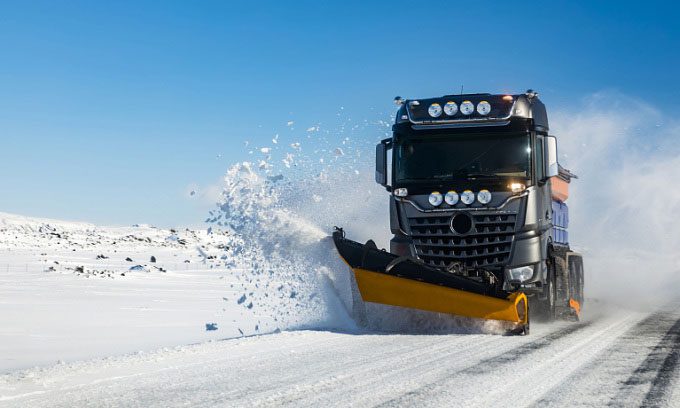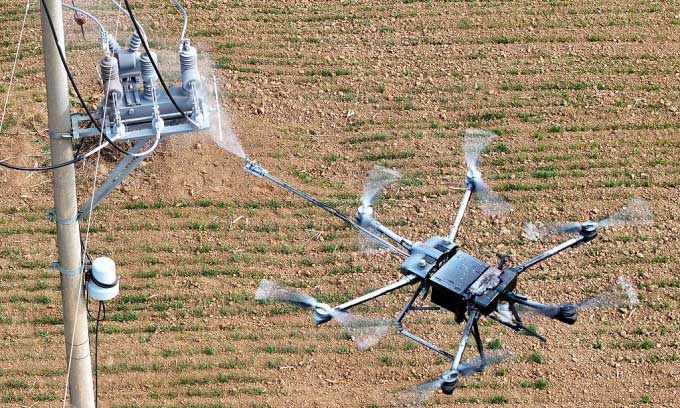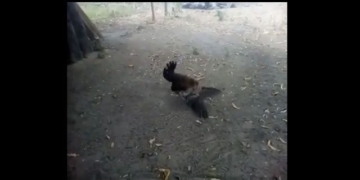China Uses Unmanned Trucks, Drones, and Intelligent Robots to Maintain Essential Operations During Harsh Winter Conditions
The China National Weather Administration reported that five measuring stations in the provinces and regions of Shanxi, Hebei, and Inner Mongolia recorded unprecedented low temperatures early on December 20. For instance, in Datong, a historic city with over three million residents in Shanxi province, temperatures dropped to -33.2 degrees Celsius. The agency noted that yesterday’s temperatures were even lower than the previous record low recorded in these areas on December 17.

Snow blowers clearing snow on the road. (Photo: CFP).
The cause of the cold wave sweeping across China, resulting in record-low temperatures, is attributed to the influence of the Arctic vortex. The polar vortex, a band of cold air circulating around the Arctic, which typically keeps the cold air in place, appears to have weakened.
In these frigid conditions, technology plays a crucial role in maintaining both production activities and daily life. Advanced technologies are becoming increasingly prevalent in China, aiding in snow removal, ice melting, maintaining power supply, and addressing challenges posed by heavy rain and snowfall during winter, CGTN reported on December 21.
Mechanization
In Jilin province, northeastern China, snow removal has been mechanized utilizing ice-melting vehicles, snow blowers, and biodegradable de-icing agents.
At the Pingshuo East open-pit mine, one of the largest open-pit coal mines in Shanxi province, real-time updates on blasting, mining, and transportation operations are displayed on a large screen in the mine’s control center, despite the extreme cold and heavy snowfall.
The mine operates continuously thanks to the support of unmanned trucks, which were put into operation in 2022, according to Deputy Mine Director Dong Shubin. “We have been coordinating the operation of five unmanned trucks. Previously, it required about 20 staff members to operate these trucks daily. Now, only a few employees are needed to ensure safety and monitor the screens from the control room,” he said. Dong further stated that the mine aims to operate about 100 unmanned trucks, each capable of carrying over 300 tons.
In many smart mines across China, the remote control of equipment such as electric shovels and drills is also being enhanced, improving production efficiency and mitigating the impact of harsh weather conditions.

A drone operated by workers in Baoding, Anhui province, eastern China. (Photo: CFP)
Intelligent Robots
In Changchun city, Jilin province, where winter temperatures drop to nearly -20 degrees Celsius, intelligent inspection robots allow staff to sit in a room and monitor equipment at the substations.
“The robots can quickly assess the condition of the equipment, significantly enhancing our work efficiency. The robots are equipped with 40 high-resolution cameras mounted on a rotating head,” stated Wang Xinbing, an employee at the local branch of the State Grid Corporation of China. Wang can review data and images transmitted by the robots from the 220 kV substation located 30 kilometers away.
High-Tech Drones
Drones are very useful for conducting rapid inspections in the rugged terrain of the Dabi Mountains, which straddle the border between Hubei, Henan, and Anhui provinces. Recently, during a severe cold snap, Xixian County in Anqing city, Anhui province, eastern China, experienced heavy snowfall, raising the risk of ice accumulation on power lines, threatening the electricity supply for the entire county.
“The fixed-wing unmanned aerial vehicles can operate at high altitudes, fly quickly, and cover long distances. With predetermined flight paths, they can complete inspections within an hour,” said Zhu Zhugang, an employee at the Anqing branch of the State Grid Corporation of China.




















































